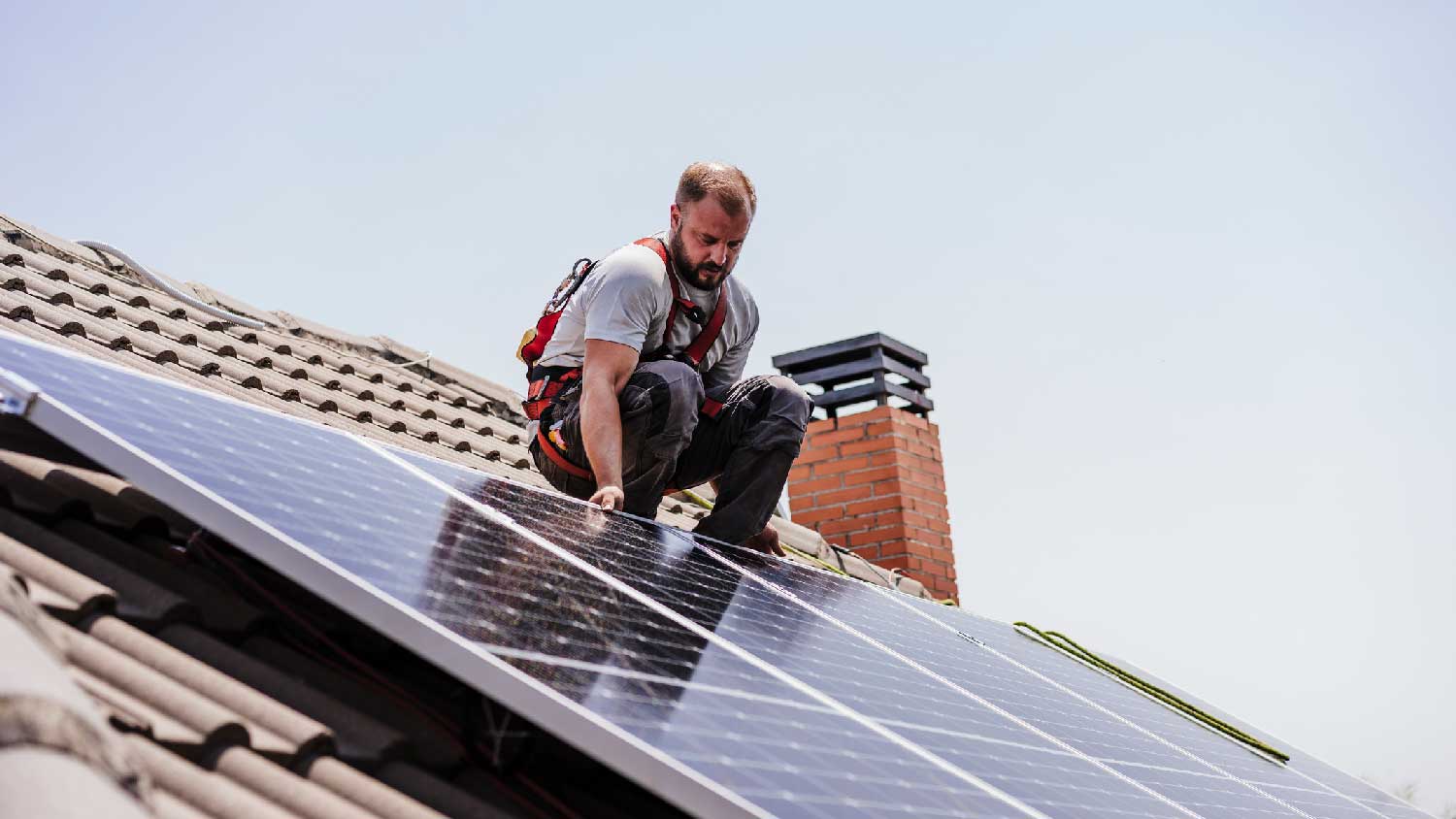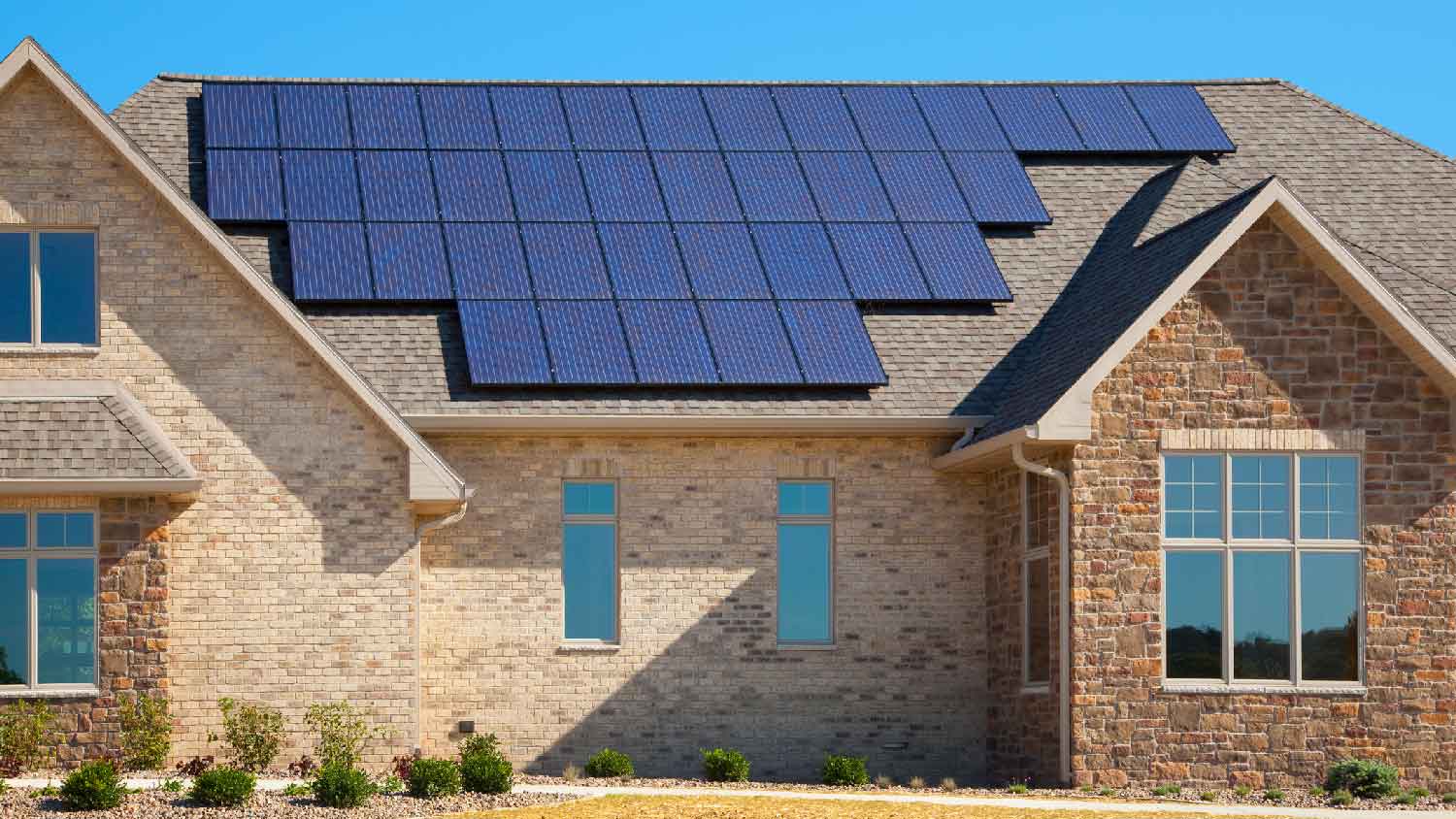
Solar battery costs depend on the size of your system, labor, and capacity. Learn how much you could pay for batteries for home solar systems.
Say hello to more power (or at least keep what you’ve got) with solar efficiency tips


Solar panels can save a bundle on energy costs, but they can lose efficiency without proper installation and care. A strategic approach to installation, maintenance, and use is the best way to keep the solar power flowing. Take a look at our 10 efficiency tips for how to increase solar power efficiency and absorb every last spark of energy from the sun.
Efficiency begins with your choice of solar panels. Monocrystalline panels outperform polycrystalline ones due to the makeup of the panels’ silicone cell, and they handle temperature changes better. You’ll need fewer monocrystalline panels than polycrystalline panels to power your home, so they’re better if you’re low on space.
Monocrystalline panels cost more up front, but you get a faster return on your investment and better long-term efficiency.
Solar panels don’t need direct sunlight to produce energy, but the amount of direct light they receive affects energy production. You can maximize output by adjusting panel tilt and direction. Those living in the Southern Hemisphere should face panels toward true north. People living in the Northern Hemisphere should face panels toward true south.
The ideal tilt angle depends on the latitude and season. Consult a local solar panel pro to determine the best tilt angle for the season and latitude.

Solar power systems are equipped with monitoring systems to alert you if there’s a problem. However, you need to check the warning lights regularly to stay aware of potential issues. You should also track voltage levels, daily energy output, and error messages for changes in the system.
Check the owner’s manual to gauge normal levels and what to do when error messages arise. Some problems you can handle yourself, while others require a solar technician. Careful monitoring so you can immediately catch error messages and warning lights and resolve issues can help extend the life span of your solar panels. Essentially, the better the panels are maintained, the longer they’ll work efficiently.
Regularly inspect the panels for cracks, dangling wires, and other signs of damage. The owner's manual contains a recommended timeline for professional solar inspections, during which an experienced technician checks the electrical components and inverter.
A solar inverter converts the direct current (DC) electricity produced by the solar panels into alternating current (AC) electricity, the power that feeds your home. The system efficiency can suffer if the inverter isn’t working properly. Follow all manufacturer’s guidelines for the maintenance of the inverter. If you notice the system output going down or changes in voltage, call a solar technician or electrician to inspect the inverter.
Solar panels easily get covered in dust, animal droppings, debris, or snow. While a little dust won’t hurt efficiency much, it can decrease energy production if it builds up over time. Cleaning frequency will depend on where you live and the debris surrounding your area, like dirt from agriculture or leaves from large trees. Knowing the best roof pitch for solar panels can help you determine the best placement to help keep the panels cleaner.
You can give solar panels a good rinse with a hose to clear debris. For dirt that’s dried and stuck on, use a brush with a soft foam or microfiber head to protect the panels’ surface. For safety’s sake, try to stay on the ground when cleaning, using a brush with a telescoping handle to reach roof-mounted panels. Finally, be gentle and clean the panels when the outside temperature isn’t too warm. The temperature difference between hot solar panels and cold water can damage the panels’ glass surface.
"When it comes to maintenance, keeping your solar panels clean is essential. Dirty PV panel glass can lead to lower solar power production. If your solar panels aren’t producing as much as they used to, it might be time to schedule a cleaning service or maintenance."
— Mike Naughton, CEO and Founder of Integrity Energy, Cleveland, OH

Solar panels can generate energy in low light, but the less light they’re exposed to, the less energy they make. Try to minimize shade by choosing an installation location with maximum sun exposure. Watch out for trees, sheds, and other buildings that can shade the panels, even for part of the day. You might need to keep close tabs on yard maintenance, like trimming bushes and trees to make sure the panels get full sun as plants grow.
When placed correctly, mirrors can act as solar panel reflector systems, redirecting sunlight to increase energy output. Strategically placed mirrors help maintain energy output as the sun moves and shadows creep toward the panels. However, the heat from the reflection can damage solar panels and the glare can affect passing cars, so you’ll need to hire a a solar technician for professional installation.
It’s helpful to learn how to use solar panels directly without a battery to maximize energy use. Solar panels create the most energy at peak sun exposure, which is during the middle of the day. Midday is the best time to run large appliances like dishwashers and washing machines. Timing energy use reduces the power used from the grid. If your system has batteries, you’ll save excess power for use at night.
Appliances equipped with smart technology can be programmed to run when you’re not home. You can use apps to monitor each appliance's energy usage and compare it to your solar energy system’s output to time them more effectively.
Solar panel trackers follow the sun and adjust the panel angle and tilt to maximize sun exposure. They’re pricey but ensure that your panels are always in the best position to produce energy. This type of technology can be particularly beneficial if you live in an area with frequent cloud cover or shade.
Power optimizers and microinverters increase the energy output of individual solar panels. They can counter the effects of uneven soiling, shade, and other factors that affect each panel’s sun exposure. Each type of solar inverter offers different pros and cons.
A central string inverter converts direct current (DC) electricity from all the panels into alternating current (AC) electricity. Microinverters convert DC to AC from an individual panel. Individual panels can continue to create power even if some panels are shaded, become less efficient over time, or break down. They allow for quick system shutdown and flexible panel layouts for partially shaded roofs. You can add more panels with microinverters if your power needs increase over time.
Power optimizers are used with string inverters to condition the DC current and optimize the voltage before it reaches the system inverter for conversion into AC current. They’re installed on individual panels in complex systems with partially shaded areas.
From average costs to expert advice, get all the answers you need to get your job done.

Solar battery costs depend on the size of your system, labor, and capacity. Learn how much you could pay for batteries for home solar systems.

Get a clear estimate for solar water heater repair cost. Learn what impacts pricing and how to budget for your solar water heater repair.

There are a few factors to consider when it comes to solar panel repair costs. This guide breaks down the prices of solar panel removal, repair, and replacement.

Solar panels are low-maintenance but occasionally require some elbow grease. This guide will help you learn how often solar panel maintenance is required.

Who can remove solar panels from roofs? The good news is that there are two types of pros that can handle a job like this—it’s up to you who you hire.

Are you wondering why your solar panels aren’t working? Here are the reasons why your solar panel system isn’t providing power like it should.